
Fianarantsoa: The Heart of Madagascar's Highlands
Discover Fianarantsoa, Madagascar's cultural and intellectual hub, offering a blend of colonial charm, stunning landscapes, and rich traditions in the heart of the highlands.
Nestled in the highlands of Madagascar, Fianarantsoa is a city that captivates with its blend of history, culture, and natural beauty. Known as the intellectual and cultural capital of Madagascar, Fianarantsoa offers a unique glimpse into the island's rich heritage and vibrant traditions. Walking through its streets, visitors can admire the colonial-era architecture that tells tales of a bygone era, while the bustling markets provide a sensory overload of sights, sounds, and aromas. Fianarantsoa is also a gateway to some of Madagascar's most stunning landscapes. The surrounding region is dotted with terraced rice paddies, lush vineyards, and rolling hills, making it a paradise for nature lovers and hikers. A visit to the nearby Ranomafana National Park is a must, where you can encounter a diverse range of wildlife, including the elusive lemurs. For those interested in local culture, Fianarantsoa is home to numerous churches, temples, and traditional Malagasy houses. The city's name itself means 'the place where one learns good things,' and this ethos is reflected in its many educational institutions and cultural centers. Whether you're exploring its historical sites, embarking on an adventure in the great outdoors, or immersing yourself in local traditions, Fianarantsoa promises an enriching and unforgettable experience.
Local tips in Fianarantsoa
- Visit the old town, known as the 'Haute-Ville', for its beautiful colonial buildings and panoramic views.
- Don't miss a trip to Ranomafana National Park for a chance to see unique wildlife and enjoy hot springs.
- Explore the local vineyards and sample the region's wine, which is unique to this part of Madagascar.
- Hire a local guide to learn more about the city's history and cultural significance.
- Plan your visit around the annual Fianar Jazz festival to experience the city's vibrant music scene.
Fianarantsoa: The Heart of Madagascar's Highlands
Nestled in the highlands of Madagascar, Fianarantsoa is a city that captivates with its blend of history, culture, and natural beauty. Known as the intellectual and cultural capital of Madagascar, Fianarantsoa offers a unique glimpse into the island's rich heritage and vibrant traditions. Walking through its streets, visitors can admire the colonial-era architecture that tells tales of a bygone era, while the bustling markets provide a sensory overload of sights, sounds, and aromas. Fianarantsoa is also a gateway to some of Madagascar's most stunning landscapes. The surrounding region is dotted with terraced rice paddies, lush vineyards, and rolling hills, making it a paradise for nature lovers and hikers. A visit to the nearby Ranomafana National Park is a must, where you can encounter a diverse range of wildlife, including the elusive lemurs. For those interested in local culture, Fianarantsoa is home to numerous churches, temples, and traditional Malagasy houses. The city's name itself means 'the place where one learns good things,' and this ethos is reflected in its many educational institutions and cultural centers. Whether you're exploring its historical sites, embarking on an adventure in the great outdoors, or immersing yourself in local traditions, Fianarantsoa promises an enriching and unforgettable experience.
When is the best time to go to Fianarantsoa?
Iconic landmarks you can’t miss
Isalo National Park
Experience the breathtaking landscapes and rich biodiversity of Isalo National Park, Madagascar's natural gem, perfect for adventure seekers and nature lovers.

Ranomafana National Park
Discover the breathtaking biodiversity and stunning landscapes of Ranomafana National Park, Madagascar's natural gem for wildlife enthusiasts and adventure seekers.
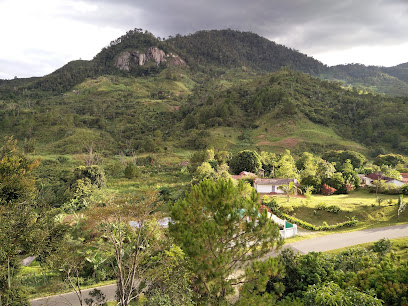
Zomatel
Discover the perfect blend of comfort and culture at Zomatel, your home away from home in the heart of Fianarantsoa, Madagascar.
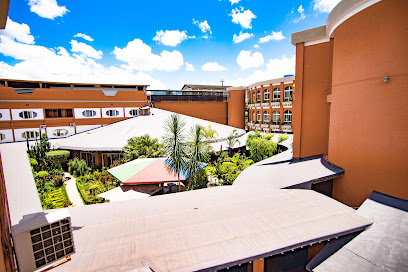
Anja Community Reserve
Explore the breathtaking Anja Community Reserve in Madagascar, home to stunning landscapes and vibrant wildlife, including the iconic ring-tailed lemurs.
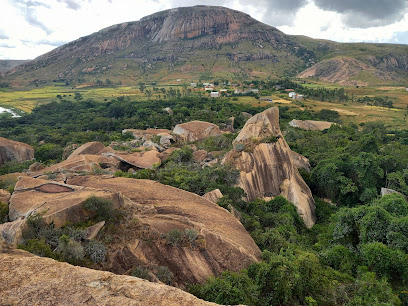
Lac Hotel Sahambavy
Discover the serene beauty of Lac Hotel Sahambavy, where comfort meets nature in the heart of Madagascar's stunning landscapes.
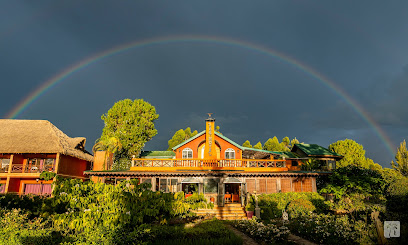
Tsara Guest House
Experience the charm and comfort of Tsara Guest House in Fianarantsoa, Madagascar, your perfect base for exploring local culture and stunning landscapes.
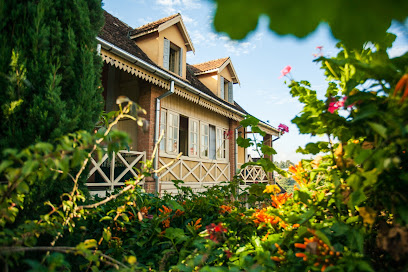
Andafiavaratra Palace
Explore the majestic Andafiavaratra Palace in Antananarivo, a historical gem showcasing Madagascar's royal heritage and stunning architecture.
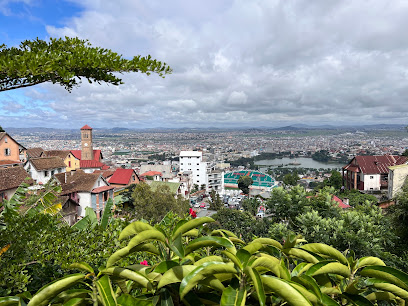
Vannie Hótel
Discover comfort and local charm at Vannie Hôtel, your perfect base for exploring the captivating landscapes of Fianarantsoa, Madagascar.

Soratel
Discover the charm of Fianarantsoa at Soratel, a cozy bed and breakfast offering warm hospitality and local flavors amidst stunning scenery.
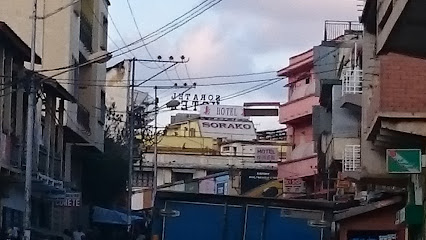
Hotel Grand Palais
Discover the perfect blend of luxury and local culture at Hotel Grand Palais in Fianarantsoa, Madagascar's serene retreat.
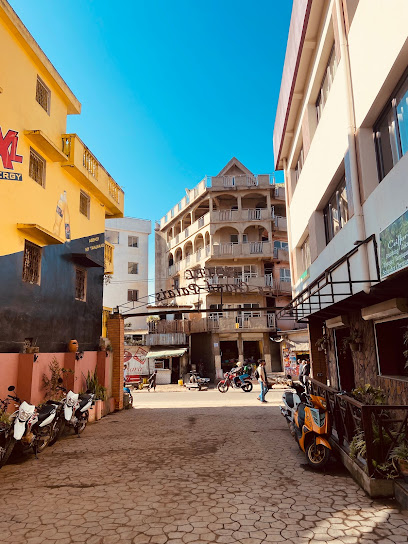
Aéroport de Fianarantsoa
Discover the enchanting highlands of Madagascar through Fianarantsoa Airport, your gateway to breathtaking landscapes and vibrant local culture.
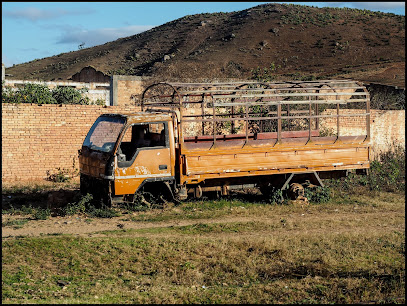
Dragon d'Or
Experience authentic Chinese cuisine in the heart of Fianarantsoa at Dragon d'Or, where every dish tells a flavorful story.

Villa Sylvestre
Experience the charm of Fianarantsoa at Villa Sylvestre, a serene bed & breakfast surrounded by Madagascar's natural beauty and rich culture.

Clos Malaza
Explore Clos Malaza in Fianarantsoa for a unique selection of local and international beverages, capturing the essence of Madagascar's rich culture.
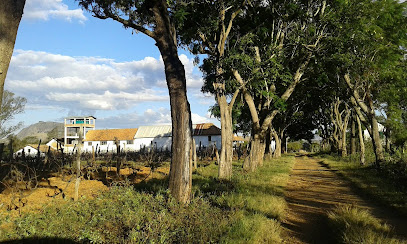
Andrainjato Fianarantsoa
Experience the breathtaking landscapes and rich culture of Andrainjato Fianarantsoa, a hidden gem in Madagascar's stunning natural playground.

Unmissable attractions to see
Isalo National Park
Explore Isalo National Park, a stunning national park in Madagascar with breathtaking landscapes, unique wildlife, and unforgettable adventures.
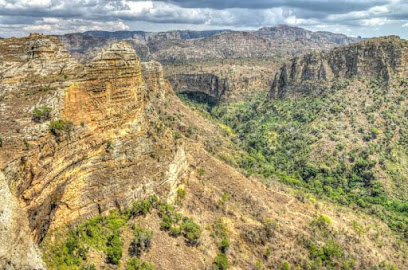
Ranomafana National Park
Discover the lush landscapes, diverse wildlife, and unique experiences at Ranomafana National Park, Madagascar's ecological gem.
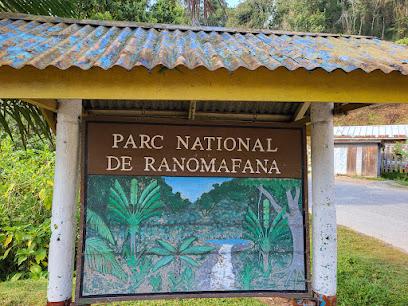
Ranomafana National Park
Explore the lush biodiversity and stunning landscapes of Ranomafana National Park, a UNESCO World Heritage site that showcases Madagascar's unique ecosystems.
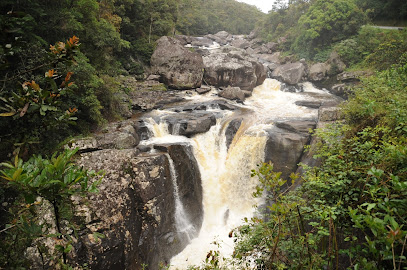
Anja Community Reserve
Explore the breathtaking Anja Community Reserve, a sanctuary for wildlife and a hub of sustainable tourism in Madagascar's lush landscapes.
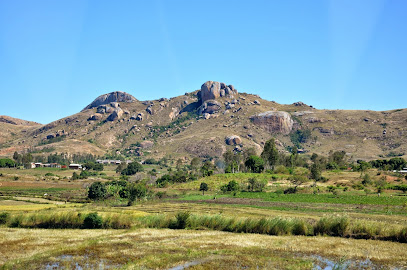
Park VOIMMA
Immerse yourself in the natural beauty of Park VOIMMA in Andasibe, Madagascar, a paradise for nature lovers and wildlife enthusiasts.
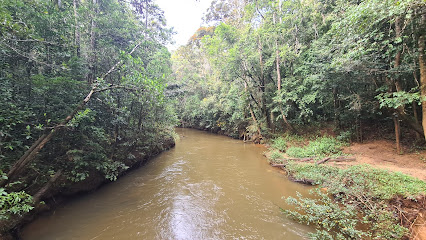
Ranomafana Arboretum
Discover the tranquil beauty of Ranomafana Arboretum, a botanical paradise showcasing Madagascar's rich flora and a haven for nature lovers.

Ranomafana Soarano Trail
Discover the breathtaking beauty and diverse wildlife along the Ranomafana Soarano Trail in Madagascar, an unforgettable hiking adventure awaits.
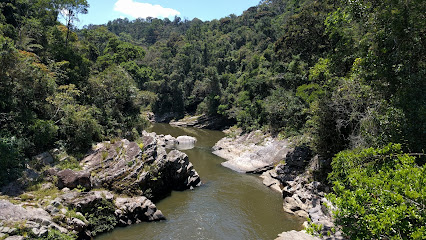
Jardin Botanique Anosy
Explore the lush beauty of Jardin Botanique Anosy, a tranquil botanical garden in Fianarantsoa, Madagascar, showcasing diverse plant life and serene landscapes.
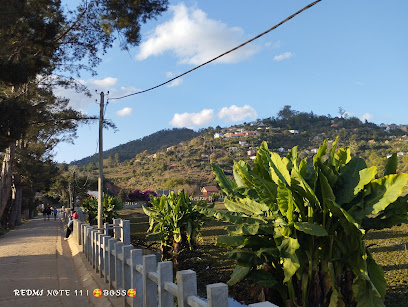
Nocturnal Species Feeding Station
Experience the enchanting world of nocturnal wildlife at the Nocturnal Species Feeding Station in Madagascar, where adventure meets education.
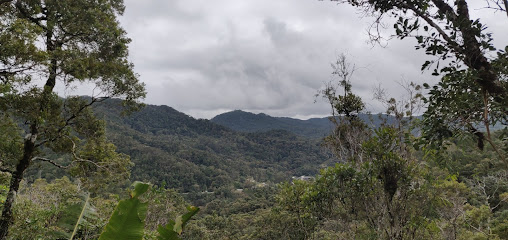
Ambalavo
Experience the rich culture, stunning landscapes, and vibrant markets of Ambalavo, a hidden gem in Madagascar for intrepid travelers.
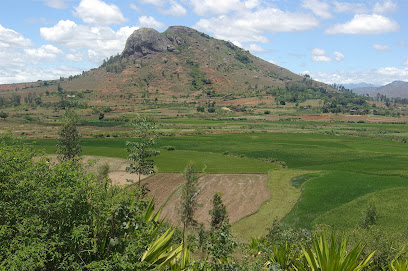
Andrainjato Fianarantsoa
Explore the breathtaking beauty and rich culture of Andrainjato Fianarantsoa, a captivating tourist attraction in Madagascar.
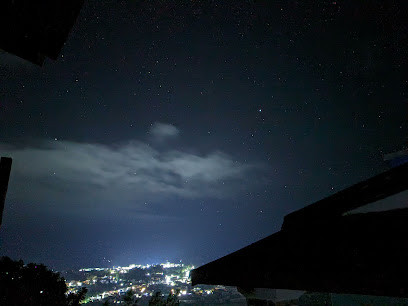
Arboretum Sakaiza
Explore the breathtaking biodiversity of Arboretum Sakaiza, a serene escape in Madagascar's lush landscapes, showcasing unique endemic flora.

Chutes Andriamamovoka
Discover the enchanting Chutes Andriamamovoka, a stunning waterfall nestled in Ranomafana's lush wilderness, offering tranquility and breathtaking views.
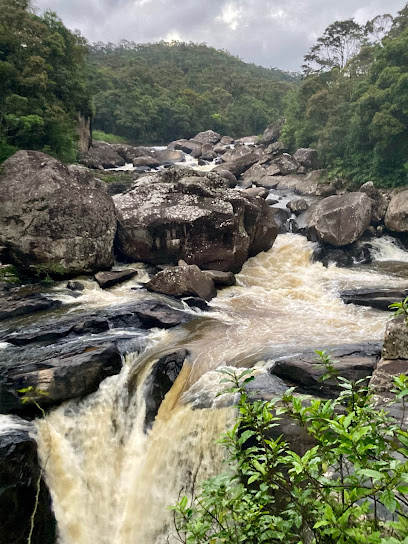
Galerie d'art
Experience the vibrant artistic heritage of Madagascar at Galerie d'art in Fianarantsoa, showcasing local talent and culture.
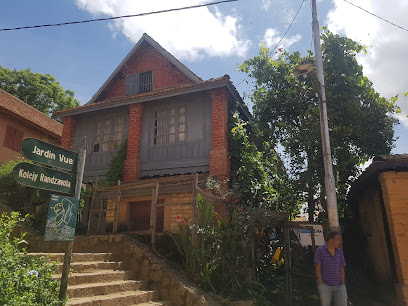
Site Ecotouristique D'Anja
Explore the stunning biodiversity and breathtaking landscapes at Site Ecotouristique D'Anja, a nature preserve in Ambalavao, Madagascar.

Essential places to dine
La Riziere
Discover the culinary delights of Madagascar at La Riziere in Fianarantsoa - where tradition meets innovation.
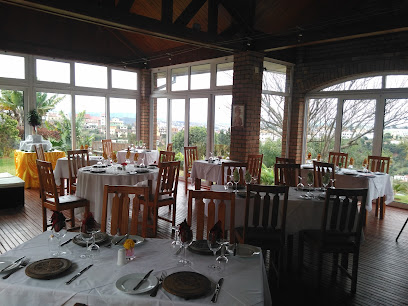
Hotel Restaurant Petite Bouffe
Experience authentic Malagasy cuisine at Hotel Restaurant Petite Bouffe in Fianarantsoa – a must-visit culinary destination.
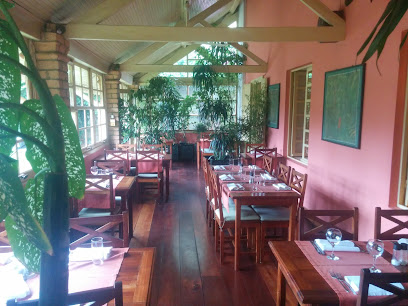
Résidence Matsiatra
Discover authentic Malagasy cuisine at Résidence Matsiatra in Fianarantsoa – where every dish tells a story.

BABI FOOD
Experience authentic Malagasy flavors at Babi Food in Fianarantsoa – where every dish tells a story.
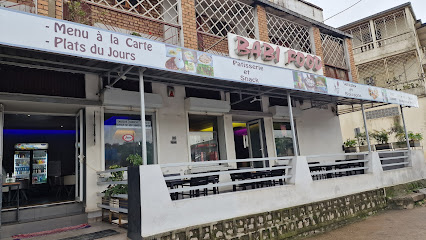
Petite Bouffe
Experience authentic Malagasy cuisine in a cozy atmosphere at Petite Bouffe in Fianarantsoa.
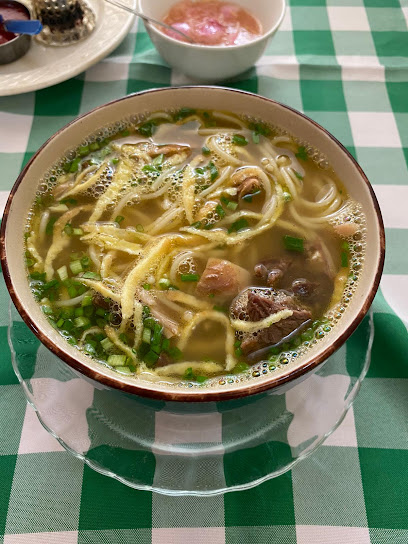
Maison d'Hôtes Three Palms
Experience authentic Malagasy cuisine at Maison d'Hôtes Three Palms in Fianarantsoa – where every meal tells a story.

Chez Ninie
Discover authentic Malagasy cuisine at Chez Ninie in Fianarantsoa - where every dish tells a story.

Ancre D`Or
Experience the best of Madagascar's culinary scene at Ancre D'Or in Fianarantsoa, where local flavors meet international flair.
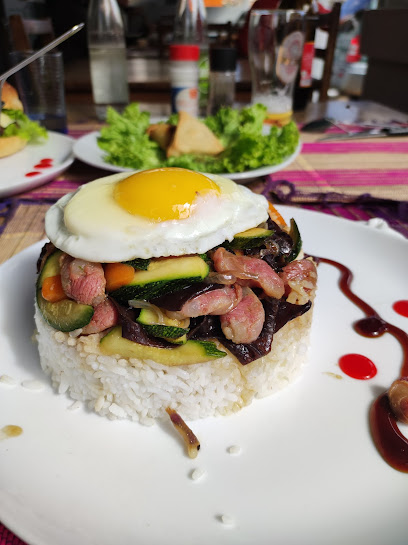
Chez Domm
Discover authentic Malagasy cuisine in Fianarantsoa at Chez Domm - a culinary journey through Madagascar's rich flavors.
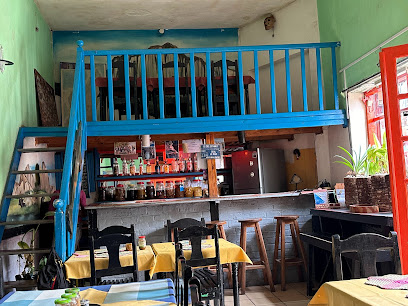
La Table du Rova (le palais)
Experience the authentic taste of Madagascar at La Table du Rova - where tradition meets culinary excellence in Fianarantsoa.
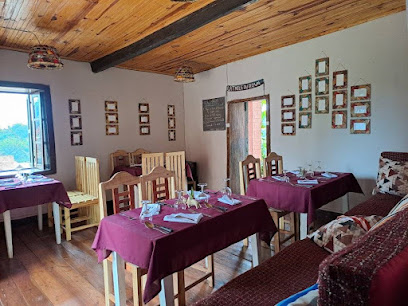
Victoria Hôtel
Indulge in authentic Malagasy cuisine at Victoria Hôtel, where every dish tells a story of Madagascar's rich culinary heritage.

Gastro Pizza - Fianarantsoa
Experience the vibrant culinary scene of Fianarantsoa at Gastro Pizza – where every bite tells a story.

La Chaud'Hier
Experience the rich flavors of Madagascar at La Chaud'Hier - a perfect blend of local cuisine and vibrant bar atmosphere.
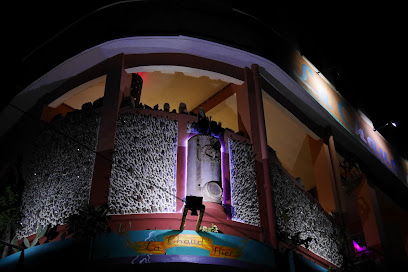
Casa Delices
Experience authentic Malagasy cuisine at Casa Delices in Fianarantsoa – where every dish tells a story.

Restaurant Marmite Cantonaise
Experience authentic Chinese cuisine at Restaurant Marmite Cantonaise in Fianarantsoa - a must-visit culinary destination for travelers.
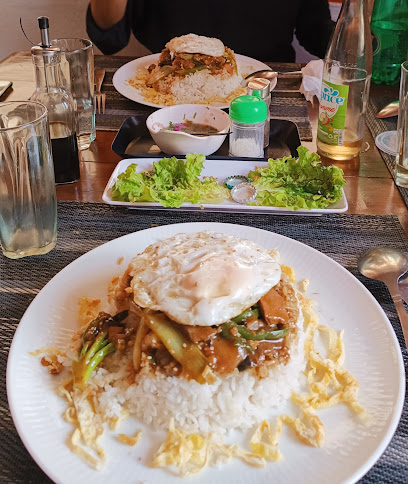
Markets, malls and hidden boutiques
Supermarché 3000
Discover the heart of Fianarantsoa at Supermarché 3000, where local flavors and everyday essentials meet in a vibrant shopping experience.
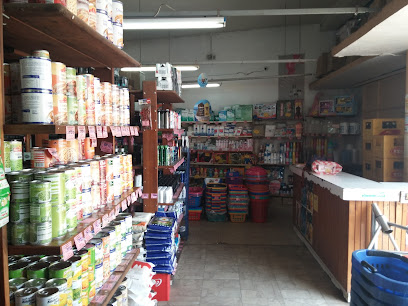
MÍS Boutique Épices de Madagascar
Discover the rich flavors of Madagascar at MÍS Boutique Épices, the ultimate destination for authentic spices and culinary treasures.
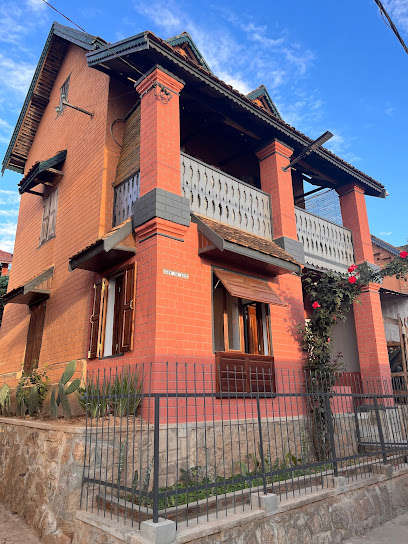
Carrefour Market Ô Matsiatra
Discover Carrefour Market Ô Matsiatra, a local supermarket in Fianarantsoa, offering fresh produce and a taste of Madagascar's vibrant culture.
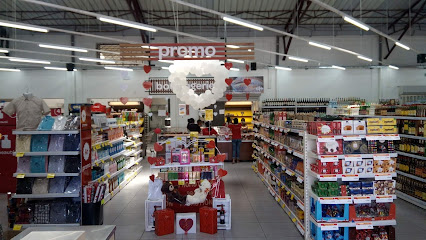
Le Relais Madagascar
Explore sustainable fashion and unique finds at Le Relais Madagascar, a must-visit used clothing store in Fianarantsoa.
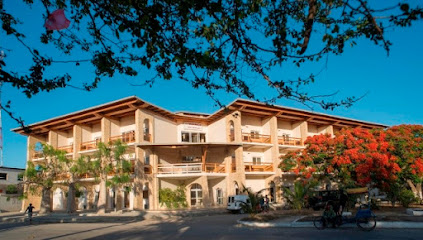
O'matsiatra
Explore O'matsiatra, a vibrant shopping mall in Fianarantsoa, where local crafts meet modern shopping for an unforgettable experience.
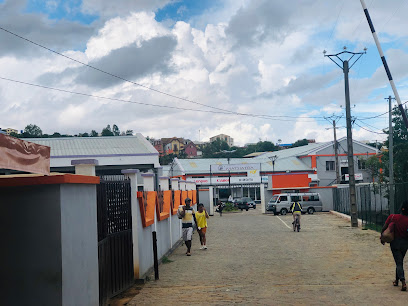
Ambonin'Antanifotsy
Explore Ambonin'Antanifotsy, a local grocery store in Fianarantsoa, and savor the authentic flavors of Madagascar in a warm and welcoming atmosphere.

Cosmos Madagascar Fianarantsoa
Discover authentic Malagasy crafts and souvenirs at Cosmos Madagascar in Fianarantsoa – a treasure trove of culture and artistry.
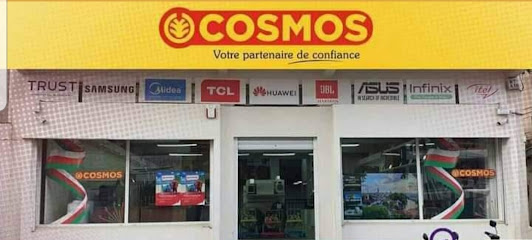
Fianar In Mode
Explore the vibrant fashion scene of Fianarantsoa at Fianar In Mode, where local artistry meets modern style in every garment.
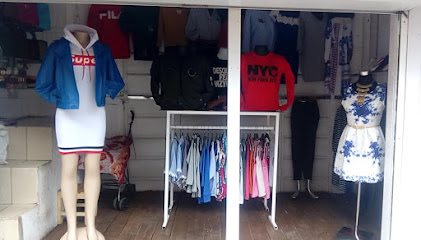
Amponenana Fianarantsoa
Discover the artistry of Madagascar at Amponenana Fianarantsoa, where handcrafted jewelry tells a story of culture and tradition.

SOAVANA Revente
Discover unique local crafts and immerse yourself in the vibrant culture of Fianarantsoa at SOAVANA Revente, Madagascar's charming store.
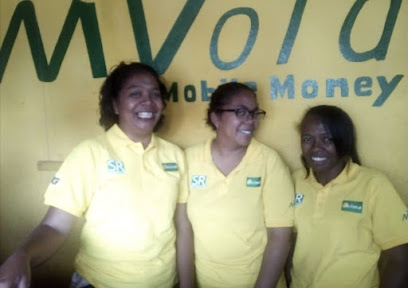
FIKAMBANANA MAMPIELY BAIBOLY MALAGASY
Discover Fikambanana Mampiely Baiboly Malagasy, a treasure trove of Malagasy literature and culture in the heart of Fianarantsoa.
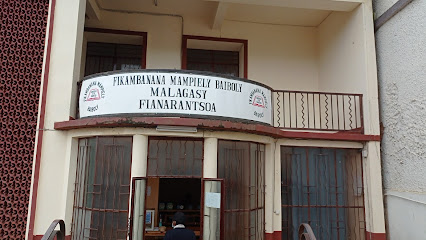
GOOD SHOP
Discover quality work clothing and local culture at GOOD SHOP in Fianarantsoa, the perfect stop for travelers in need of durable attire.

AFAFI
Explore AFAFI in Fianarantsoa for an unforgettable shopping experience filled with local crafts, modern retail, and cultural vibrancy.

Abbatoir Fianarantsoa
Discover the local charm and vibrant market scene at Abbatoir Fianarantsoa, where Madagascar's culture comes alive through its food and crafts.

Magasin Haja
Explore Magasin Haja in Fianarantsoa for local goods and unique souvenirs, reflecting Madagascar's vibrant culture and craftsmanship.

Essential bars & hidden hideouts
La Riziere
Discover the rich flavors of Madagascar at La Riziere, a captivating restaurant in Fianarantsoa offering local delights and a warm atmosphere.
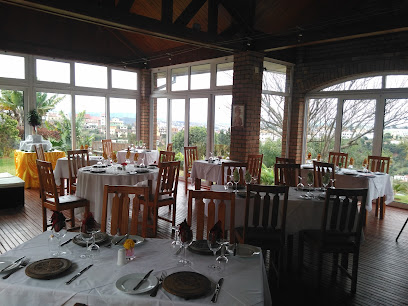
Tsara Guest House
Discover the charm of Fianarantsoa at Tsara Guest House, where comfort meets Malgasy hospitality in a serene setting.
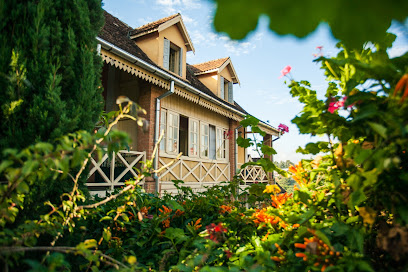
Résidence Matsiatra
Experience the exquisite flavors of Madagascar at Résidence Matsiatra, where culinary tradition meets warm hospitality in Fianarantsoa.

BABI FOOD
Experience the authentic flavors of Madagascar at BABI FOOD, a delightful restaurant in Fianarantsoa offering a diverse menu in a cozy atmosphere.

Maison d'Hôtes Three Palms
Discover the authentic flavors of Madagascar at Maison d'Hôtes Three Palms, where local cuisine meets a warm atmosphere in Fianarantsoa.
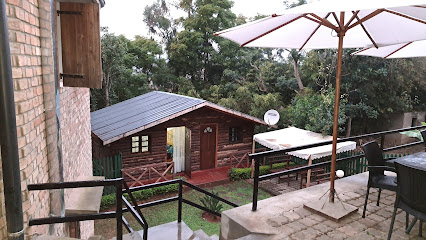
La Chaud'Hier
Experience the vibrant flavors of Madagascar at La Chaud'Hier, a charming bar and restaurant in Fianarantsoa, perfect for relaxing after a day of adventure.
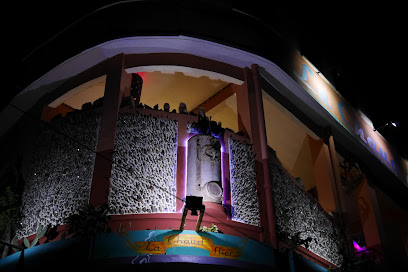
Restaurant Marmite Cantonaise
Explore the authentic flavors of Chinese cuisine at Restaurant Marmite Cantonaise in Fianarantsoa, Madagascar, where each dish tells a story.

Zigzag
Discover the vibrant karaoke scene at Zigzag in Fianarantsoa, where locals and tourists come together for unforgettable nights of music and fun.

La Terrasse Anosy
Experience the best of Malagasy cuisine at La Terrasse Anosy, with stunning views of Lac Anosy and a relaxing atmosphere for every traveler.
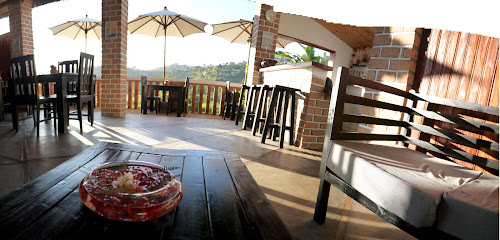
JAX Disco
Discover the vibrant nightlife and lively atmosphere at JAX Disco, a popular bar in Fianarantsoa, Madagascar, where music and culture collide.
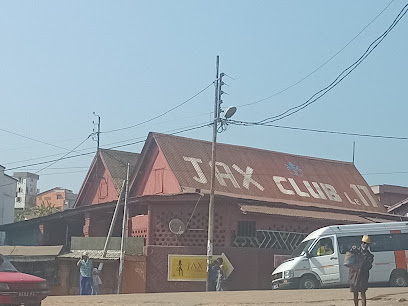
Chez Didi
Discover the vibrant nightlife of Fianarantsoa at Chez Didi, where karaoke brings together locals and tourists for unforgettable musical moments.
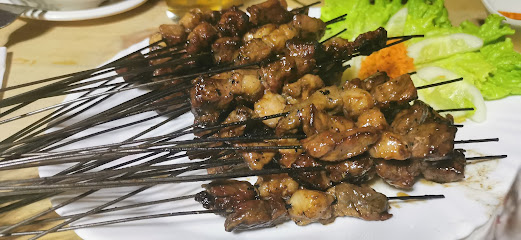
Nick's
Experience the best of fast food at Nick's in Fianarantsoa – where local flavors meet quick service for an unforgettable dining experience.
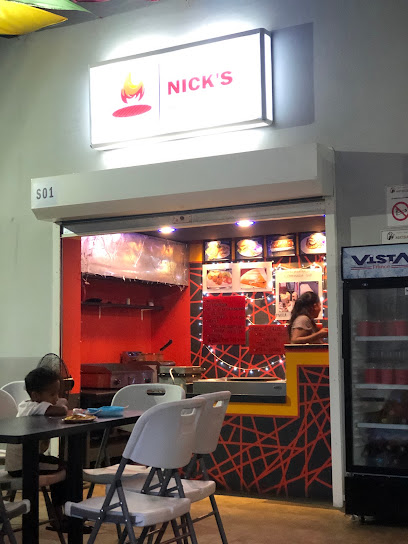
LAZAN I BETSILEO SA
Experience the vibrant atmosphere and local charm at LAZAN I BETSILEO SA, a must-visit bar in Fianarantsoa, Madagascar, for all travelers.
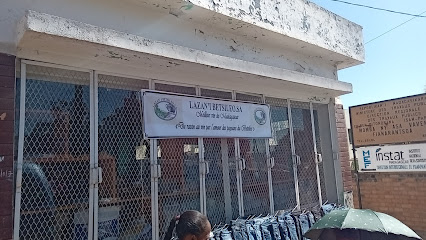
La Verdure
Discover La Verdure in Fianarantsoa: a vibrant bar offering local flavors and a lively atmosphere for an unforgettable experience.

RANJALIA Hôtel
Experience the authentic taste of Madagascar at RANJALIA Hôtel, a delightful restaurant and hotel in the heart of Fianarantsoa.
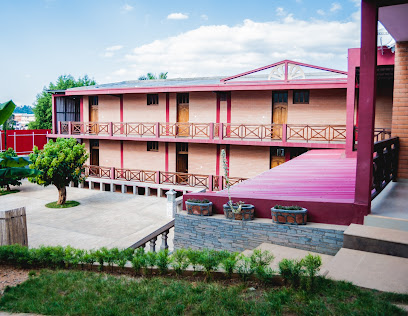
Local Phrases
-
- HelloSalama
[Sa-la-ma] - GoodbyeVeloma
[Ve-lo-ma] - YesEny
[E-ny] - NoTsy
[Tsy] - Please/You're welcomeAzafady
[A-za-fa-dy] - Thank youMisaotra
[Mi-sa-ot-ra] - Excuse me/SorryAzafady
[A-za-fa-dy] - How are you?Manao ahoana ianao?
[Ma-nao a-wa-na ya-nao] - Fine. And you?Tsara. Aiza ianao?
[Tsa-ra Ai-za ya-nao] - Do you speak English?Miteny Anglisy ve ianao?
[Mi-te-ny Ang-li-sy ve ya-nao] - I don't understandTsy mahay
[Tsy ma-ha-ay]
- HelloSalama
-
- I'd like to see the menu, pleaseTe-hahita ny menio, azafady
[Te-ha-hi-ta ny me-ni-o, a-za-fa-dy] - I don't eat meatTsy mihinam-bary aho
[Tsy mi-hi-nam-ba-ry a-ho] - Cheers!Mazotoa!
[Ma-zo-to-a] - I would like to pay, pleaseTe-hahita ny fandoavam-bola, azafady
[Te-ha-hi-ta ny fan-do-ava-m-bo-la, a-za-fa-dy]
- I'd like to see the menu, pleaseTe-hahita ny menio, azafady
-
- Help!Fanampiana!
[Fa-nam-pia-na] - Go away!Mandehana!
[Man-de-ha-na] - Call the Police!Mangataka ny polisy!
[Man-ga-ta-ka ny po-li-sy] - Call a doctor!Mangataka dokotera!
[Man-ga-ta-ka do-ko-te-ra] - I'm lostTsy mahita lalana aho
[Tsy ma-hi-ta la-la-na a-ho] - I'm illTsy mety aho
[Tsy me-ty a-ho]
- Help!Fanampiana!
-
- I'd like to buy...Te-hahita hanako...
[Te-ha-hi-ta ha-na-ko...] - I'm just lookingMitady ihany
[Mi-ta-dy i-ha-ny] - How much is it?Ohomby be i? (for price)
[O-hom-by be i?] - That's too expensiveMahatsiaro be
[Ma-hat-sya-ro be] - Can you lower the price?Afaka mandefa ny vidiny ve ianao?
[A-fa-ka man-de-fa ny vi-di-ny ve ya-nao]
- I'd like to buy...Te-hahita hanako...
-
- What time is it?Inona no lasa?
[I-no-na no la-sa] - It's one o'clockEnina iray
[E-ni-na i-rai] - Half past (10)Efita maro
[E-fi-ta ma-ro] - MorningMaraina
[Ma-rai-na] - AfternoonAndro
[An-dro] - EveningHariva
[Ha-ri-va] - YesterdayOmaly
[O-ma-ly] - TodayAnio
[A-ni-o] - TomorrowRy zoma
[Ry zo-ma] - 1Iray
[I-rai] - 2Roa
[Ro-a] - 3Telo
[Te-lo] - 4Efatra
[E-fa-tra] - 5Dimy
[Di-my] - 6Enina
[E-ni-na] - 7Fito
[Fi-to] - 8Valo
[Va-lo] - 9Sivy
[Si-vy] - 10Folo
[Fo-lo]
- What time is it?Inona no lasa?
-
- Where's a/the...?Aiza ny...
[Ai-za ny...] - What's the address?Inona ny adiresy?
[I-no-na ny a-di-re-sy] - Can you show me (on the map)?Afaka manampy ahy (amin'ny sarita)?
[A-fa-ka ma-nam-py a-hy a-mi-ni sa-ri-ta] - When's the next (bus)?Aiza ny farany (taxi-brousse)?
[Ai-za ny fa-ra-ni (ta-xi-brousse)] - A ticket (to ....)Fandaniana (ho ...)
[Fa-nda-nia-na (ho ...)]
- Where's a/the...?Aiza ny...
History of Fianarantsoa
-
Fianarantsoa, meaning 'the place where one learns good things,' was founded in 1830 by Queen Ranavalona I. It was strategically established as the administrative capital of the Betsileo province, one of the three major highland regions in Madagascar. The city was designed with a plan to emulate the capital, Antananarivo, in both architecture and structure.
-
During the French colonization of Madagascar from 1895 to 1960, Fianarantsoa played a significant role as a center of administration and agriculture. The French influence is still evident today in the city's architecture and layout, with numerous colonial buildings dotting the landscape. The city became a hub for the production of tea, wine, and other agricultural products.
-
In 1947, Fianarantsoa was one of the key sites of the Malagasy Uprising against French colonial rule. The city's residents participated in the revolt, which was marked by significant violence and loss of life. The aftermath of the uprising saw increased repression by the French authorities but also laid the groundwork for the eventual independence of Madagascar in 1960.
-
Following Madagascar's independence in 1960, Fianarantsoa continued to grow as an important educational and cultural center. The city houses the University of Fianarantsoa, which attracts students from all over the country. Today, Fianarantsoa is renowned for its vibrant cultural scene, including traditional Betsileo music and dance, as well as its picturesque old town, which has been nominated for UNESCO World Heritage status.
-
The Fianarantsoa-Côte Est (FCE) railway, completed in 1936, is a vital link between the highlands and the coastal city of Manakara. This railway not only facilitates trade but also provides one of the most scenic train journeys in the world, offering a glimpse into the diverse landscapes and cultures of Madagascar. The railway remains an essential part of the local economy and a popular attraction for tourists.
Fianarantsoa Essentials
-
Fianarantsoa is located in the central highlands of Madagascar. The nearest international airport is Ivato International Airport in Antananarivo, approximately 400 kilometers away. From Antananarivo, you can take a domestic flight to Fianarantsoa, which is the quickest method. Alternatively, you can travel by taxi-brousse (shared minibus) or hire a private car. The road journey typically takes around 8 to 10 hours, offering scenic views of the Malagasy highlands.
-
Fianarantsoa is a walkable city, but for longer distances, local taxis and rickshaws (pousse-pousse) are readily available. Taxi-brousses are the primary mode of public transport for traveling to nearby towns and villages. Car rentals are also an option if you prefer to explore the region at your own pace. However, be aware that road conditions can be challenging, especially during the rainy season.
-
The official currency in Madagascar is the Malagasy Ariary (MGA). Credit cards are accepted in some hotels, restaurants, and larger shops, but it is advisable to carry cash, especially when visiting smaller establishments and rural areas. ATMs are available in Fianarantsoa, but it's wise to withdraw sufficient cash before traveling to more remote locations. Ensure you have small denominations for easier transactions.
-
Fianarantsoa is generally safe for tourists, but it is important to take standard precautions. Avoid walking alone at night in unfamiliar areas, and keep an eye on your belongings in crowded places like markets and bus stations. The neighborhoods around the train station and some parts of the lower city are known for higher crime rates targeting tourists, so exercise extra caution in these areas.
-
In case of emergency, dial 117 for police assistance or 124 for medical emergencies. Fianarantsoa has a regional hospital and several clinics that can handle most medical issues. It is advisable to have travel insurance that covers medical emergencies. For minor health issues, there are pharmacies throughout the city where you can purchase over-the-counter medications.
-
Fashion: Do dress modestly, especially when visiting religious sites. Avoid wearing revealing clothing. Religion: Do respect local customs and traditions. Always remove your shoes before entering a place of worship. Public Transport: Do be patient, as public transport can be crowded and schedules unpredictable. Don't haggle aggressively with taxi-brousse drivers. Greetings: Do greet people with a friendly 'Salama' (hello). A handshake is common, and a slight bow can show extra respect. Eating & Drinking: Do try local dishes and accept food offerings graciously. Don't refuse hospitality, as it is considered impolite.
-
To experience Fianarantsoa like a local, visit the local markets where you can buy fresh produce and traditional Malagasy crafts. Engage with locals, as they are often friendly and willing to share stories about the city's history and culture. Don't miss visiting the old town (Haute-Ville) for its colonial architecture and narrow streets. For a unique experience, take the Fianarantsoa-Côte Est (FCE) train to Manakara, offering scenic views of the landscape and an authentic travel experience.
Nearby Cities to Fianarantsoa
-
Things To Do in Manakara
-
Things To Do in Antsirabe
-
Things To Do in Antananarivo
-
Things To Do in Andasibe
-
Things To Do in Mandrare River
-
Things To Do in Fort Dauphin
-
Things To Do in Ifaty
-
Things To Do in Toliara
-
Things To Do in Toamasina
-
Things To Do in Mahajanga
-
Things To Do in Majunga
-
Things To Do in Nosy Be
-
Things To Do in Chirongui
-
Things To Do in Bandrele
-
Things To Do in Dembeni







